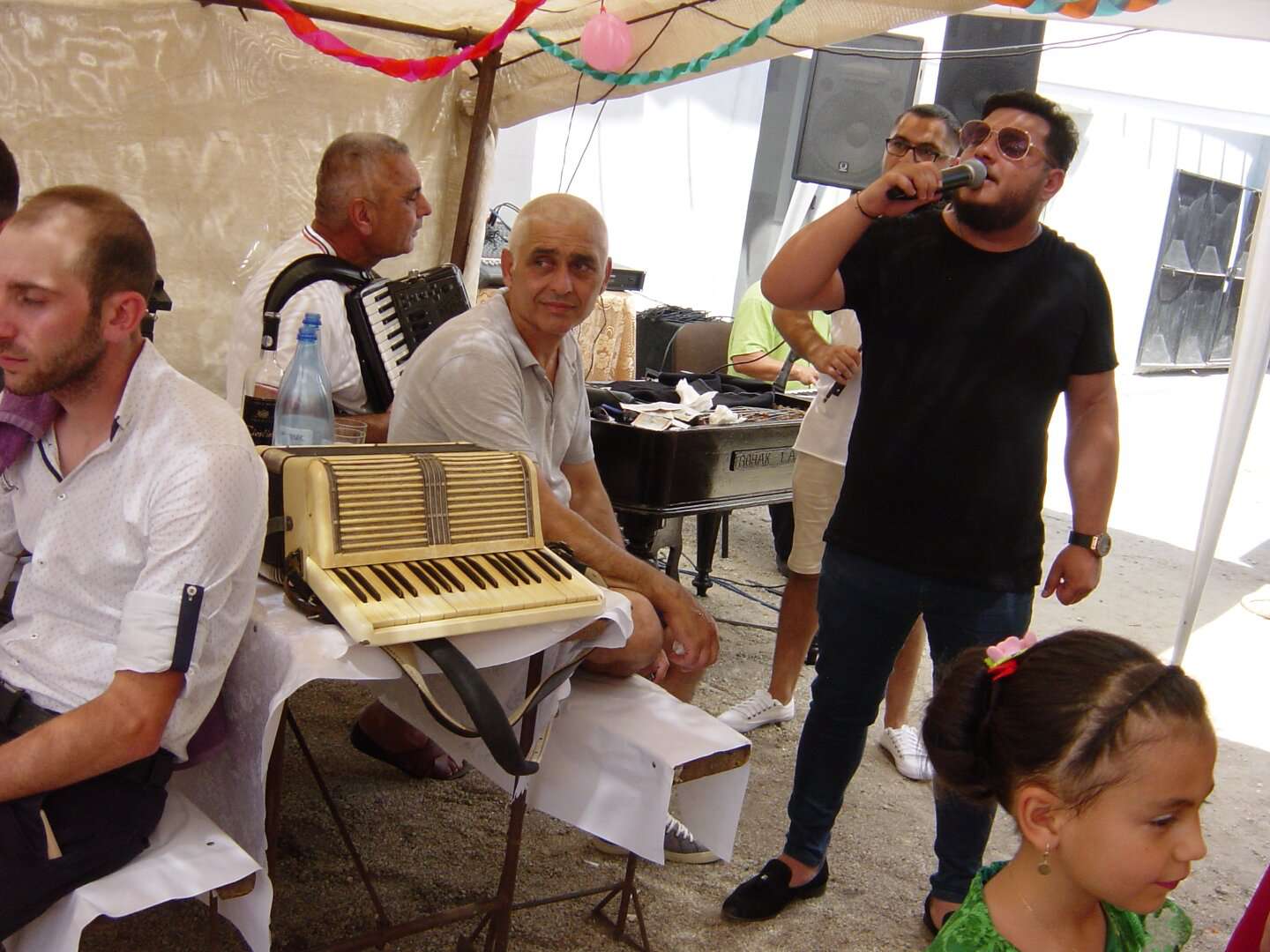Manele (sg., manea) is an urban Romanian ethno-pop genre that combines local traditional music with Romani, southern Balkan, Middle Eastern and global popular music elements. It is performed primarily by professional male Romani musicians (lăutari, sg. lăutar) at weddings and other family celebrations, at clubs and on music videos.
Manele
Manele became enormously popular after the 1989 revolution, especially among Romanian and Romani youth, for whom it represented the newly unfettered social conditions. The genre has engendered controversy among the educated and professional elites, who view it as crude, vulgar and foreign to the Romanian national character.
Manele is characterised by Turkish-derived scales (such as hicaz) that sometimes employ microtones and virtuosic improvisatory instrumental passages. The southern Balkan čoček/kyuchek is the predominant rhythm, in variants of 2/4 and 4/4. The synthesiser provides much of the ‘oriental’ sound, along with the electric violin, accordion, clarinet, saxophone and drums.
Today manelişti (sg., manelist) experiment and expand their styles and techniques of performance; sub-genres embrace reggaeton, hip-hop, rap and blues, for example.

Village wedding in southern Romania. Ionuţ Ştefan (vocals); Băieţică (accordion) and Alin Zaharia (electric violin). Cartojani, Romania. 2017.
Credit: Margaret Beissinger
In the 1970s and 1980s the genre was termed muzică sîrbească [Serbian music] and later muzică turcească [Turkish music]. It was outlawed by the nationalist Communist government but circulated underground. Following the collapse of Communism, it boldly and publicly emerged as muzică orientală [Oriental music], performed almost entirely by lăutari.
The Romani guitarist Dan Armeancă became the guru of the genre in the 1990s, but it was vocalists such as Adrian Copilul Minune [the Child Wonder] and Vali Vijelie [Whirlwind] who issued hit after hit. By the early 2000s, the genre was permanently called manele as another wave of manelişti appeared, among them the vocalists Nicolae Guţă and Florin Salam (Arabic greeting meaning ‘Peace’), who is the most prominent manelist today. The genre became obligatory repertoire not only at Romani traditional weddings but also at Romanian ones. Simultaneously, the formerly in-group Romani solo manea, a women’s dance featuring small subtle steps and delicately raised arms, became the rage for both genders and all ethnic groups.
Rights held by: Carol Silverman | Licensed by: Carol Silverman | Licensed under: CC-BY-NC 3.0 Germany | Provided by: RomArchive



